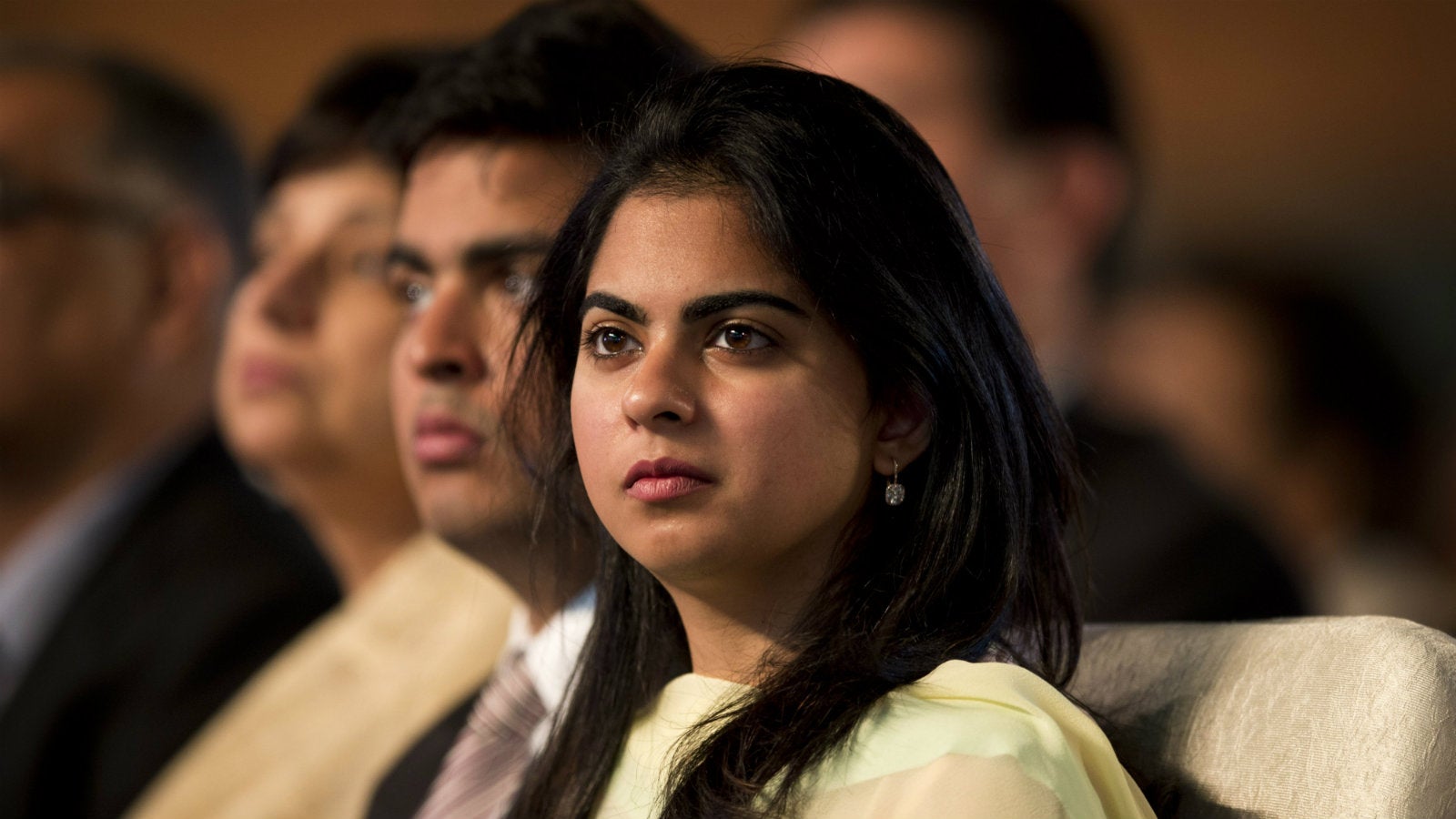The heirs of India’s old and rich family businesses are, increasingly, heiresses
Last week Bloomberg named the next generation of India Inc to watch out for. Many of these well-educated young tycoons belong to some of the country’s oldest family-owned businesses, but there’s an interesting new trend among them: Several are women, in a society where business families have traditionally been patriarchal.


Last week Bloomberg named the next generation of India Inc to watch out for. Many of these well-educated young tycoons belong to some of the country’s oldest family-owned businesses, but there’s an interesting new trend among them: Several are women, in a society where business families have traditionally been patriarchal.
Some of India’s biggest family-owned conglomerates have rich histories spread over more than a century. But they have always had the men of the family take the baton from their predecessors. Women were often married off to other rich business families, and their corporate exposure limited to board directorship or handling corporate social responsibility departments. Now, in a break with tradition, some young women appear to have been groomed from a young age to take on core responsibilities in family businesses.
Women at the core of operations
All three women on Bloomberg’s list of seven handle core operations of the units they lead: Isha Ambani, daughter of Reliance Industries chairman Mukesh Ambani—India’s richest man—has launched a fashion brand for the group’s retail venture. Roshni Nadar Malhotra, daughter of HCL founder Shiv Nadar, is the CEO of HCL Enterprise. And Ananyashree Birla, daughter of $41 billion-Aditya Birla group chairman Kumar Mangalam Birla, is leading a microfinance firm she founded.
Beyond the list, other powerful female scions include Tanya Dubash, daughter of Godrej Industries chairman Adi Godrej and the group’s chief brand officer. There’s also Ashni Biyani, daughter of Future Group chairman Kishore Biyani, who heads Future Ideas, a business solutions firm focussing on design.
Woman power
This shift is welcome in a country where the participation of women in the labour force has dropped in recent past—from 37% in 2005 to 30% in 2011 (pdf). The global average is around 50%.
The picture in corporate boardrooms isn’t any different. Only a handful of large Indian companies is led by women—mostly in the banking and finance industry. Only 7.7% of the board seats in all of India’s listed companies are held by women, according to Deloitte (pdf). Further, only 2.7% of these corporate boards are chaired by women.
With such grim numbers, the fact that future Indian businesses will count more female leaders is encouraging. Experts say there are many factors behind this change:
For one, Indian families are shrinking in size. Earlier, larger families once meant many family members vying for a few leadership roles, explains Kavil Ramachandran, executive director of the Thomas Schmidheiny Centre for Family Enterprise at the Indian School of Business, Hyderabad. ”Now, with nuclear families, there are more opportunities for women,” he says. “Additionally, education levels of girls in the family are better. Women have also become more vocal about opportunities and prefer to be financially and intellectually independent.”
Well-heeled Indian women also used to marry younger—often in order to ally with another business family. Dipti Salgaocar, daughter of Reliance founder Dhirubhai Ambani married Dattaraj Salgaocar, an industrialist from the western Indian state of Goa, but has never been in the limelight for matters related to business. Nina Kothari, Dhirubhai’s other daughter, married now-deceased businessman Shyam Kothari.
Another likely factor behind the rise of women leaders is that the nature of production is less focused on manufacturing or factory work. Many traditional companies started with manufacturing operations that required top executives to deal with labour unions and workers on the factory floors on a daily basis—something that women weren’t considered capable of doing, years ago. Now, with many big businesses leaning towards the services sector, Ramachandran suggests that operations have become more open and accepting of female leaders.
Whatever the reason, Indian businesses are taking small steps towards bringing more women into leadership roles. But with women making up nearly 48.5% of the population in Asia’s third-largest economy, there’s still a lot of catching up to do.
We welcome your comments at [email protected].